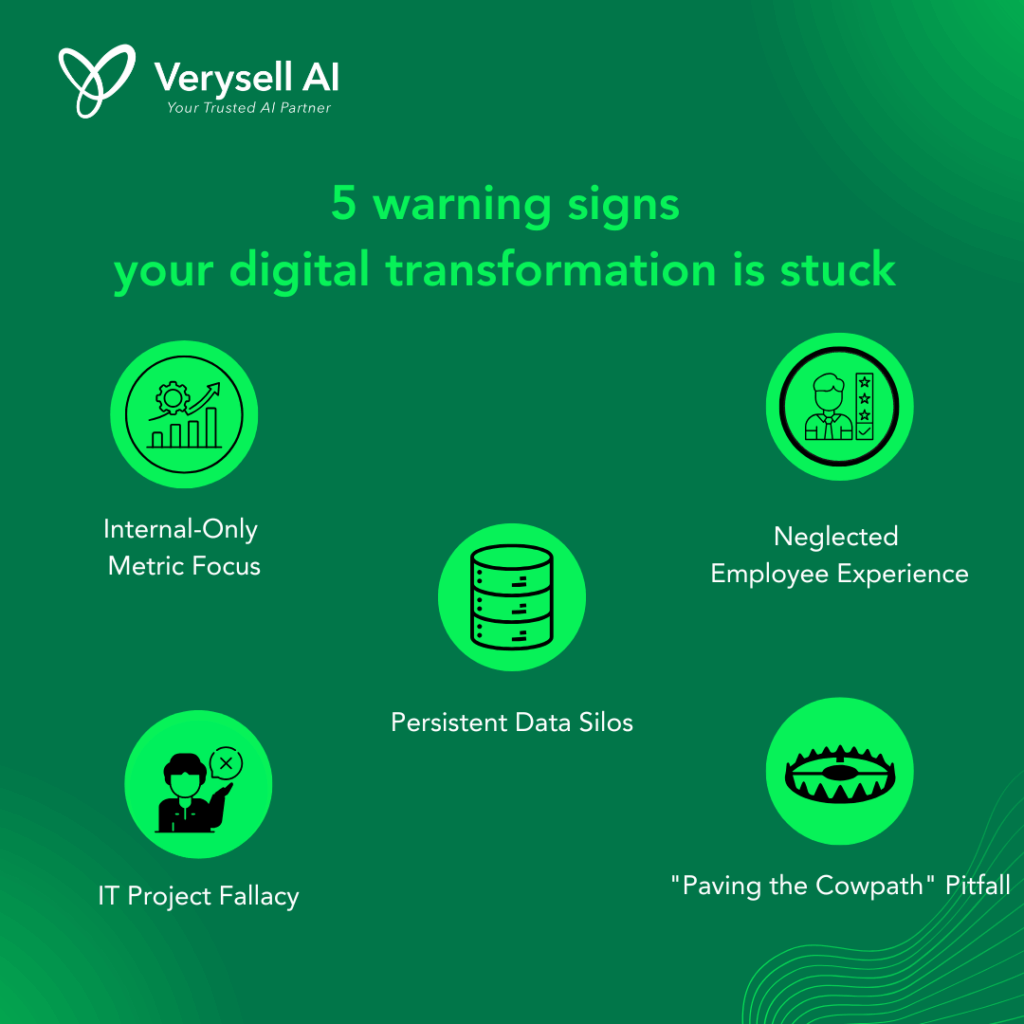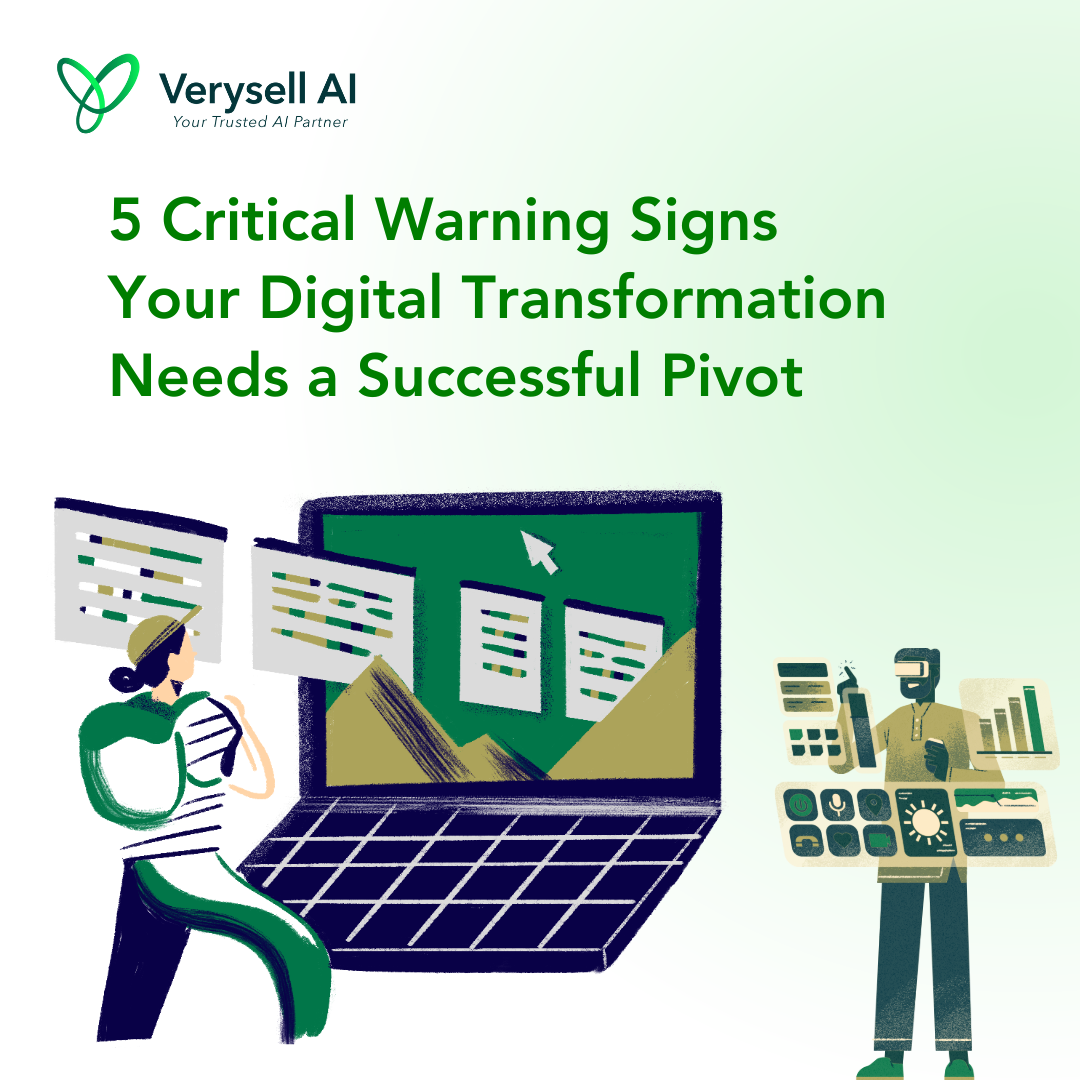In boardrooms and strategy meetings worldwide, digital transformation is a topic of urgent priority. For the past decade, it has been synonymous with survival, efficiency, and modernization. Companies have invested billions in new cloud infrastructures, data analytics platforms, and automation tools, all in a bid to become leaner, faster, and more cost-effective. This was the “Efficiency Era,” and it was necessary.
But today, that’s no longer enough. The game has changed.
True digital transformation has evolved. Its focus has pivoted from a purely internal race for efficiency to an external and internal focus on experience. In this new era, the primary goal is not just to cut costs but to create measurable value through a superior customer experience and a seamless employee experience.
The problem is that many organizations are still stuck in the old way of thinking. They believe they are transforming when, in reality, they are just optimizing. They are running on a treadmill of upgrades without ever changing their destination. Is your organization one of them? This blog will list the warning signs that your digital transformation is still stuck in the “Efficiency Era” and provide the practical “pivot” for each one.
5 Critical Warning Signs of Stuck Digital Transformation

1. Your Key Metrics Are 100% Internal
This is the most revealing sign. When your leadership team asks for a progress report on your transformation, what are the first metrics you present?
- Stuck in Efficiency: Your dashboards are dominated by internal, operational metrics: Return on Investment (ROI), IT cost savings, system uptime, process cycle time, and bug reduction. You celebrate successfully cutting a departmental budget by 10% or automating a five-step process down to three.
- Focused on Experience: A modern transformation, while still tracking efficiency, prioritizes human-centric metrics. These dashboards lead with Net Promoter Score (NPS), Customer Lifetime Value (CLV), Customer Satisfaction (CSAT), and employee retention rates.
If your definition of success is based solely on what you save, not on what you create for your customers, you are missing the entire point of modern transformation. The value of a superior customer experience is not theoretical. A report from PwC found that customers are willing to pay a price premium of up to 16% for a great experience, and 32% of all customers would stop doing business with a brand they loved after just one bad experience (PwC, n.d.).
A successful pivot means changing your definition of “value” from “money saved” to “loyalty earned.”

2. You Are “Paving the Cowpath”
This classic industry term describes the misguided practice of using new, expensive technology to automate an old, broken, or inefficient process.
- Stuck in Efficiency: Your team takes a 10-page paper-based customer onboarding form and, at great expense, turns it into a 10-page digital form. You’ve simply “paved the cowpath,” making a bad process faster without ever asking why the path was there in the first place or if it should even exist.
- Focused on Experience: A true transformation re-engineers the process from the ground up, starting with the ideal customer experience. The team would ask, “What is the absolute minimum information we need from a customer to get started?” They would discover that 8 of those 10 pages are for internal bureaucracy. They would scrap the form entirely, build a simple two-field app, and pull the other required data automatically from other systems.
Paving the cowpath doesn’t just miss an opportunity for innovation; it actively frustrates users. It forces both your customers and your employees to follow a nonsensical path, only now they are doing it on a high-speed, expensive digital highway.
3. Transformation Is Treated as an “IT Project”
Pay close attention to who owns the digital transformation initiative in your organization. If the answer is “the CIO” or “the IT department,” you have a problem.
- Stuck in Efficiency: The initiative is managed like a typical IT project: it has a budget, a timeline, and a “go-live” date. It’s called the “Cloud Migration” or the “CRM Upgrade.” The rest of the business – marketing, sales, HR – are treated as “stakeholders” who provide requirements, not as co-owners.
- Focused on Experience: Technology is only the enabler of transformation; it is not the goal. A successful transformation is a business-wide strategy that is championed by the CEO and co-owned by all department heads. It is a permanent cultural shift in how the company operates, not a project that can be checked off a list.
This distinction is a primary driver of success or failure. Research from McKinsey has consistently shown that roughly 70% of digital transformation initiatives fail to reach their stated goals (McKinsey, 2018). A key reason for this staggering failure rate is that companies treat it as a technical problem when it is, in fact, a human and strategic one.
4. Your Employee Experience (EX) Is an Afterthought
Your employee experience is the engine that drives your customer experience. You cannot possibly deliver a fast, empathetic, and seamless experience to your customers if your employees are fighting a daily battle with slow, clunky, and disconnected internal tools.
- Stuck in Efficiency: You roll out a new enterprise-grade system because it was 15% cheaper and “met 90% of the technical requirements.” Your employees, however, find it confusing and slow. They now need three separate logins to answer one simple customer question. To compensate, they create “shadow IT”, which is a messy web of personal spreadsheets, sticky notes, and workarounds, just to do their jobs.
- Focused on Experience: You treat your employees like your first and most important customers. You invest in intuitive, consumer-grade tools that are integrated and make their jobs easier. You understand that every second an employee wastes fighting bad technology is a second they aren’t spending on high-value work for a customer.
The data on this is clear. A report from the MIT Sloan Center for Information Systems Research found that companies in the top quartile of employee experience achieve double the customer experience scores and are 25% more profitable than their competitors (MIT CISR, 2017).
5. Your Data Is Still Stuck in Silos
In an efficiency-focused company, data is treated as the “property” of the department that creates it. The finance team has its financial data, the sales team has its CRM data, and the marketing team has its campaign data. They exist in separate, well-guarded castles.
- Stuck in Efficiency: A long-time customer calls your support line with a problem. They are forced to re-introduce themselves, explain their purchase history, and detail their issue… even though they just provided that same information to your sales team and a chatbot last week. Your systems don’t talk, and the customer pays the price.
- Focused on Experience: In a modern digital transformation, data is seen as a shared enterprise asset. The “holy grail” is creating a single, unified view of the customer by integrating your core systems. When a customer contacts you, your team, or even your automated AI, has their entire history on one screen. They can see their last purchase, their open support ticket, and the marketing email they received yesterday. This allows you to solve their problem in seconds, not minutes, and makes them feel known and valued.
The Core Problem and The Single Pivot
These five signs are not five separate problems. They are all symptoms of one core issue: Your organization operates from an “Inside-Out” mindset. This means your strategy, processes, and technology are all designed around your own internal structure, departments, and history. The customer is expected to adapt to your way of doing things. The single, unifying solution is to flip the model and adopt an “Outside-In” or “Customer-Centric” mindset.
This is a strategic, top-down decision to place the customer at the absolute center of all decisions. When you commit to this one pivot, the solutions to all five signs naturally fall into place.
- It Fixes Your Metrics (Sign 1)
If your company is truly customer-centric, your most important metrics must be customer metrics. Net Promoter Score (NPS), Customer Satisfaction (CSAT), and Customer Lifetime Value (CLV) become your new definition of success. Internal cost savings become a secondary benefit, not the primary goal. - It Redesigns Your Processes (Sign 2)
A customer-centric approach doesn’t ask, “How do we automate our form?” It asks, “What is the fastest, most frictionless way for a customer to get what they want?” This forces you to abandon the “cowpath” and design the ideal journey from their perspective. - It Reassigns Ownership (Sign 3)
A customer-centric transformation cannot be led by the IT department alone. It must be led by the business units that own the customer experience (Marketing, Sales, and Service). The CEO must sponsor it, and the business must lead it, with IT as the critical technical partner. - It Prioritizes Your Employees (Sign 4)
This mindset understands that employees are “Customer Zero.” A truly customer-centric company knows that you cannot have a happy, well-served external customer if your internal employees are miserable. A great employee experience is the prerequisite for a great customer experience. A report from the MIT Sloan Center for Information Systems Research found that companies in the top quartile of EX are 25% more profitable (MIT CISR, 2017). - It Unifies Your Data (Sign 5)
To be customer-centric, you must have a single, unified view of the customer. You can’t provide a seamless, personal experience if your data is siloed. This provides the powerful business “why” that is needed to break down departmental walls and fund the data-sharing projects that are essential for personalization.
Harness the Power of AI in Your Transformation

Pivoting from “efficiency” to “experience” is the single most important strategic shift a modern business can make. This new era is powered by data, analytics, and, most importantly, Artificial Intelligence.
AI is the engine that unifies siloed data, personalizes customer journeys at scale, and empowers your employees with the insights they need. If you’re ready to make the pivot and unlock real, experience-driven growth, Verysell AI can help you build the strategy and deploy the solutions to get there.
Contact Verysell AI today to move beyond simple optimization and start your true transformation.


